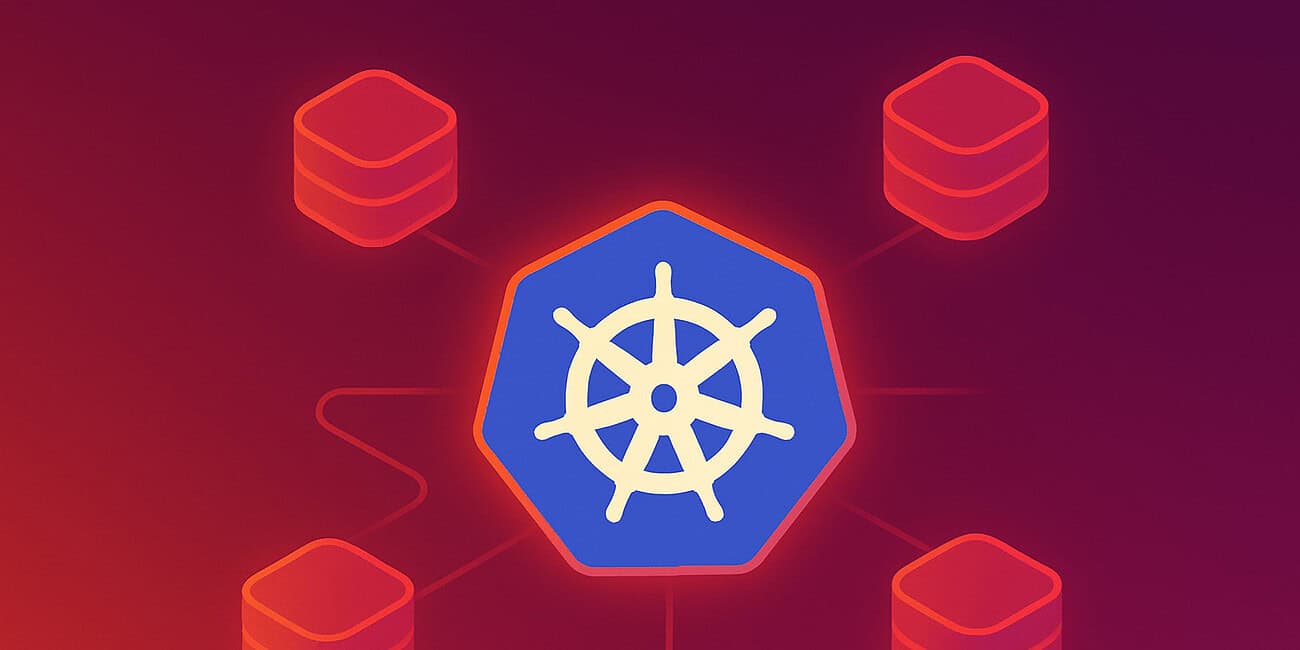Last Updated on 13/05/2025 by CloudRank
In the rapidly evolving world of DevOps and cloud computing, Kubernetes has emerged as an indispensable tool for orchestrating containerised applications. As we stride into 2025, the complexity of managing Kubernetes clusters is set to increase, necessitating the need for advanced tools that streamline operations and enhance productivity. Here, we delve into ten essential Kubernetes management tools that promise to save you hours by optimising your workflow and ensuring robust cluster management.
Why Kubernetes Management Tools are Crucial
Kubernetes, often hailed as the de facto standard for container orchestration, offers immense power and flexibility. However, with great power comes great complexity. As organisations scale, managing these clusters effectively becomes a daunting task.
Kubernetes management tools are designed to abstract away the complexity, enabling developers and operators to focus on what truly matters—delivering value to users. These tools facilitate easier deployment, scaling, and operations, helping teams streamline their workflows. When selecting a solution, organizations should consider the best managed kubernetes provider criteria to ensure they partner with a provider that meets their specific needs for security, performance, and scalability. Ultimately, the right management tools not only enhance efficiency but also drive innovation by allowing teams to experiment and iterate rapidly.
Navigating Complexity with Ease
The inherent complexity of Kubernetes can overwhelm even experienced operators. Kubernetes management tools simplify this complexity by offering user-friendly interfaces and automated capabilities. These tools transform Kubernetes from a daunting challenge into an accessible platform, thereby empowering teams to deploy and manage applications efficiently. By abstracting intricate details, these tools allow teams to concentrate on application logic and user experience.
Enhancing Team Collaboration
With multiple teams often working on the same Kubernetes clusters, collaboration becomes a crucial factor for success. Kubernetes management tools facilitate seamless collaboration by providing shared dashboards, role-based access controls, and unified communication channels.
This ensures all team members are in sync, reducing the risk of errors and fostering a culture of transparency and cooperation.
Future-Proofing Operations
As technology evolves, so do the demands on Kubernetes clusters. Management tools not only meet current needs but also adapt to future requirements. These tools are regularly updated to incorporate the latest features and security patches, ensuring that organisations remain competitive and secure. By investing in robust management solutions, companies can safeguard their operations against future disruptions and technological shifts.
The Rise of Managed Kubernetes
In 2025, the trend towards managed Kubernetes services will continue to gain momentum. These services, offered by major cloud providers like AWS, Google Cloud, and Azure, take the heavy lifting out of managing Kubernetes infrastructure. As organizations increasingly adopt containerization, these managed services will not only simplify deployment but also enhance security and scalability. To stay competitive, businesses will seek managed Kubernetes insights for 2025, focusing on optimizing their cloud resources and improving operational efficiency. Furthermore, analytics tools integrated within these platforms will provide real-time monitoring and performance metrics, allowing teams to make informed decisions quickly. As organizations explore options, an azure managed kubernetes overview will become crucial for understanding how to leverage Azure’s capabilities effectively. Additionally, the ability to integrate machine learning services with Kubernetes will enable companies to harness advanced analytics and automation, further streamlining their operations. This convergence of technologies will empower businesses to innovate faster and respond to market demands with greater agility.
However, even with managed services, the need for specialised tools to handle deployment, monitoring, and scaling remains.
Simplifying Infrastructure Management
Managed Kubernetes services relieve organisations from the burden of infrastructure maintenance. By outsourcing infrastructure management to cloud providers, companies can focus on developing and deploying applications rather than handling server configurations and updates. This shift enables quicker innovation cycles and a more agile response to business demands. Additionally, organisations can leverage managed Kubernetes service comparison tools to evaluate different offerings based on features, performance, and cost. This empowers them to choose a solution that best fits their specific needs, ensuring optimal resource allocation and cost efficiency. By embracing these managed services, businesses can stay competitive in a fast-paced digital environment.
Balancing Control and Convenience
Whilst managed services offer convenience, they also pose challenges in terms of control. Organisations must strike a balance between leveraging the ease of managed services and maintaining control over their environments. Kubernetes management tools help bridge this gap by offering granular control over deployments, configurations, and monitoring, ensuring that businesses can tailor their operations to specific needs.
Cost Implications and Optimisation
Managed Kubernetes services come with associated costs, which can rapidly escalate without proper oversight. Kubernetes management tools assist in cost optimisation by providing insights into resource utilisation, identifying unused resources, and suggesting optimisations. By leveraging these tools, organisations can maximise their ROI and ensure cost-effective operations.
Top Kubernetes Management Tools
1. Kubernetes Dashboard
The Kubernetes Dashboard is a web-based interface that provides a visual insight into the state of a Kubernetes cluster. It enables users to manage resources, troubleshoot issues, and understand the cluster’s overall health. In 2025, the dashboard remains an essential tool for both beginners and seasoned professionals, offering an intuitive way to interact with Kubernetes.
Intuitive User Experience
The dashboard offers a user-friendly interface that simplifies complex operations. Users can easily navigate through different sections, gaining insights into node status, resource consumption, and active workloads. This intuitive design reduces the learning curve for new users and enhances productivity for seasoned operators.
Real-Time Monitoring
Real-time monitoring capabilities allow users to track cluster performance and resource utilisation instantly. By visualising metrics and logs, teams can quickly identify and address issues, ensuring optimal cluster health. This proactive approach minimises downtime and enhances the reliability of applications.
Customisation and Extensibility
The Kubernetes Dashboard can be customised to fit specific organisational needs. Users can extend its functionality through plugins and integrations, tailoring the tool to align with unique workflows and processes.
This flexibility ensures that the dashboard remains relevant and useful in diverse operational contexts.
2. Helm
Helm, often referred to as the package manager for Kubernetes, simplifies the deployment and management of applications. By using Helm charts, developers can package applications into reusable, versioned templates, thereby streamlining the deployment process and ensuring consistency across environments.
Streamlining Application Deployment
Helm charts enable developers to define, install, and upgrade even the most complex Kubernetes applications. These charts encapsulate application resources and configurations, ensuring that deployments are consistent and repeatable across different environments. This streamlining reduces deployment errors and accelerates time-to-market.
Version Control and Rollbacks
Helm supports version control, allowing teams to track changes and revert to previous versions if necessary.
Note: This text does not include Americanisms that need to be translated into British English. The text is already suitable for a British audience.
This capability is crucial for maintaining application stability and mitigating the impact of failed deployments. By enabling easy rollbacks, Helm ensures continuity and reduces operational risks.
Community and Ecosystem Support
Helm has a vibrant community that contributes to a rich ecosystem of pre-built charts. Organisations can leverage these community-contributed charts to deploy popular applications quickly, saving time and effort in creating configurations from scratch. This collaborative environment fosters innovation and knowledge sharing.
3. Prometheus and Grafana
Monitoring is vital for maintaining the health of Kubernetes clusters. Prometheus, coupled with Grafana, offers a powerful monitoring solution. Prometheus collects metrics from Kubernetes clusters, while Grafana provides a rich visualisation layer. This combination enables teams to gain actionable insights and proactively address potential issues.
Comprehensive Metrics Collection
Prometheus excels at collecting detailed metrics across various components of a Kubernetes cluster. These metrics provide valuable insights into resource utilisation, performance bottlenecks, and system health. By analysing these metrics, teams can optimise resource allocation and improve overall efficiency.
Advanced Data Visualisation
Grafana transforms raw metrics into interactive, visually appealing dashboards. These dashboards enable teams to monitor key performance indicators, track trends over time, and receive alerts for anomalies. This visual representation simplifies data interpretation and supports informed decision-making.
Alerting and Incident Response
With Prometheus and Grafana, teams can set up sophisticated alerting rules that trigger notifications based on specific conditions.
This proactive approach to incident response ensures that issues are addressed promptly, minimising the impact on users and maintaining service reliability.
4. Kustomize
Kustomize is a configuration management tool that allows users to customise Kubernetes YAML configurations. Unlike traditional templating solutions, Kustomize offers a more declarative approach, enabling users to apply overlays to existing configurations without modifying the underlying files.
Declarative Configuration Management
Kustomize embraces a declarative approach, where users define the desired state of their configurations. This method reduces complexity by separating configuration logic from application code, allowing teams to manage configurations independently and ensure consistency across environments.
Flexibility and Reusability
By using overlays, Kustomize allows teams to modify configurations without altering the original files.
This flexibility promotes reusability and simplifies the management of environment-specific settings. Teams can easily adapt configurations to different stages of development, testing, and production.
Simplifying Complex Deployments
Kustomize excels at simplifying complex deployments involving multiple configurations and components. By organising configurations into manageable units, it reduces the cognitive load on operators and streamlines the deployment process. This simplification enhances the agility and reliability of deployments.
5. K9s
K9s is a terminal-based UI that simplifies the interaction with Kubernetes clusters. It provides a streamlined interface for navigating resources, viewing logs, and managing workloads. For DevOps professionals who prefer working from the command line, K9s is an invaluable tool.
Command-Line Efficiency
K9s offers a command-line interface that aligns with the workflows of experienced DevOps professionals.
This text-based approach enhances efficiency by allowing users to carry out tasks quickly without the need for a graphical interface. Command-line aficionados appreciate the pace and simplicity of K9s.
Streamlined Resource Management
With K9s, users can easily navigate and manage Kubernetes resources such as pods, services, and deployments. The tool provides a comprehensive view of resource status and relationships, simplifying the management of complex clusters. This clarity enables teams to maintain control over their environments.
Real-Time Log Viewing
K9s facilitates real-time log viewing, permitting teams to monitor application behaviour and troubleshoot issues on the go. By accessing logs directly from the terminal, operators can gain insights into application performance and identify root causes of problems, all without leaving the command line.
6.
Argo CD
As continuous delivery becomes increasingly vital, Argo CD emerges as a dominant tool for implementing GitOps practices on Kubernetes. It automatise the deployment of applications and ensures that clusters are constantly in sync with their Git repositories, providing a solid mechanism for managing application lifecycle.
Embracing GitOps Principles
Argo CD embodies GitOps principles by using Git as the solitary source of truth for Kubernetes configurations. This approach ensures that clusters reflect the desired state defined in Git, enhancing consistency and traceability. By automatizing deployments, Argo CD lessens manual interference and accelerates delivery cycles.
Automated Synchronisation
Argo CD continuously monitors Git repositories for changes and synchronises them with the cluster. This automation ensures that deployments are always up-to-date and aligned with the latest configurations.
By eliminating configuration drift, Argo CD maintains operational integrity and reduces the risk of errors.
Enhanced Security and Compliance
By leveraging Git for configuration management, Argo CD enhances security and compliance. The tool provides audit trails and version histories for configurations, enabling teams to track changes and demonstrate compliance with regulatory requirements. This transparency supports governance and risk management efforts.
7. Lens
Lens is an integrated development environment for Kubernetes. It offers a comprehensive set of features, including a built-in terminal, real-time cluster state visualisation, and resource management capabilities. Lens streamlines the development workflow and enhances collaboration among team members.
Comprehensive Cluster Management
Lens provides a holistic view of Kubernetes clusters, enabling users to manage resources, monitor performance, and troubleshoot issues from a single interface.
This comprehensive approach simplifies cluster management and reduces the need for multiple disparate tools.
Real-Time Collaboration
With Lens, teams can collaborate in real-time by sharing insights, configurations, and troubleshooting tips. The tool’s collaborative features encourage teamwork and knowledge sharing, enhancing the collective efficiency and effectiveness of DevOps teams.
Seamless Development Integration
Lens seamlessly integrates with development workflows, offering a built-in terminal and direct access to cluster resources. This integration enables developers to test and deploy applications efficiently, bridging the gap between development and operations and promoting a DevOps culture.
8. Kubectl
No list of Kubernetes tools would be complete without mentioning Kubectl. As the primary command-line tool for interacting with Kubernetes clusters, Kubectl provides a powerful interface for managing applications, inspecting resources, and troubleshooting issues.
Versatile Command-Line Interface
Kubectl offers a versatile command-line interface that supports a wide range of operations, from deploying applications to inspecting logs. Its flexibility empowers users to perform complex tasks with simple commands, making it an indispensable tool for Kubernetes practitioners.
In-Depth Resource Inspection
With Kubectl, users can inspect the status and configuration of Kubernetes resources in detail. This capability is crucial for diagnosing problems, understanding dependencies, and ensuring that applications are running as expected. By providing deep visibility, Kubectl supports effective troubleshooting and optimisation.
Extensive Community and Documentation
Kubectl benefits from a large and active community that contributes to its development and maintenance. Extensive documentation and community resources ensure that users have access to the latest features, best practice, and troubleshooting tips.
This support network enhances user experience and knowledge sharing.
9. Thanos
Thanos extends Prometheus by enabling long-term storage and scalable querying of metrics. It is particularly useful for large-scale environments where retaining historical data is vital for capacity planning and trend analysis.
Scalable Long-Term Storage
Thanos provides scalable long-term storage solutions for Prometheus metrics, allowing organisations to retain historical data for extended periods. This capability supports capacity planning, trend analysis, and compliance reporting, ensuring that organisations can make informed decisions based on historical insights.
High Availability and Reliability
By replicating data across multiple instances, Thanos enhances the availability and reliability of metrics storage. This redundancy ensures that organisations have continuous access to critical data, even in the face of failures or outages.
By safeguarding data integrity, Thanos supports resilient operations.
Unified Enquiry and Visualisation
Thanos enables unified enquiry and visualisation of metrics from multiple Prometheus instances. This consolidation simplifies data analysis and provides a comprehensive view of system performance. By offering a single pane of glass, Thanos enhances operational oversight and decision-making.
10. Istio
Istio is a service mesh that enhances the observability, security, and resilience of microservices architectures on Kubernetes. By providing traffic management, policy enforcement, and telemetry collection, Istio empowers teams to build robust, scalable applications.
Advanced Traffic Management
Istio offers advanced traffic management capabilities, allowing teams to control the flow of network traffic between services. This control supports load balancing, traffic splitting, and fault injection, enabling organisations to optimise performance and resilience.
Enhanced Security and Compliance
With Istio, organisations can implement robust security policies, including mutual TLS authentication and fine-grained access controls. These security features protect sensitive data and ensure compliance with regulatory standards, mitigating risks and enhancing trust.
Comprehensive Observability
Istio provides comprehensive observability features, including distributed tracing and telemetry collection. These capabilities enable teams to monitor application performance, identify bottlenecks, and optimise resource allocation. By enhancing visibility, Istio supports proactive management and continuous improvement.
Real-World Applications and Benefits
The adoption of these Kubernetes management tools in real-world scenarios underscores their practical benefits.
For instance, organisations leveraging Helm have reported significant reductions in deployment times, while teams using Prometheus and Grafana have enhanced their monitoring capabilities, leading to quicker incident response times. Argo CD, with its GitOps approach, has enabled seamless application rollouts and rollbacks, minimising downtime and ensuring continuity.
Streamlining Deployment Processes
Organisations using Helm have experienced streamlined deployment processes, reducing complexity and increasing speed. By providing reusable templates, Helm ensures consistency across environments and minimises the risk of deployment errors. This efficiency accelerates time-to-market and enhances competitiveness.
Enhancing Monitoring and Response
The combination of Prometheus and Grafana has significantly improved monitoring capabilities for many organisations.
By providing real-time insights and alerts, these tools enable teams to respond swiftly to incidents, reducing downtime and enhancing user satisfaction. This proactive approach to monitoring supports continuous service improvement.
Facilitating Continuous Delivery
Argo CD’s GitOps approach has revolutionised continuous delivery practices for numerous organisations. By automating deployments and keeping clusters in sync with Git repositories, Argo CD reduces manual intervention and assures operational consistency. This automation enhances agility and supports rapid innovation.
Conclusion
As we navigate the complexities of Kubernetes in 2025, the right management tools will be instrumental in maintaining efficient operations. From enhancing visibility with Kubernetes Dashboard to automating deployments with Argo CD, these tools offer unparalleled advantages for DevOps teams.
By integrating these solutions into your workflow, you can save precious time, reduce operational overhead, and concentrate on driving innovation.
In an era where agility and efficiency are paramount, equipping your team with these essential Kubernetes management tools will undoubtedly provide a competitive edge. Embrace these innovations and position your organisation for success in the ever-evolving landscape of cloud-native technologies.
Preparing for the Future
By adopting these tools, organisations can prepare for the future challenges of Kubernetes management. These solutions offer scalability, flexibility, and innovation, ensuring that teams can adapt to changing demands and technological advancements. By staying ahead of the curve, businesses can achieve sustainable growth and maintain a competitive edge.
Driving Innovation and Growth
Kubernetes management tools empower teams to focus on innovation and growth rather than operational maintenance.
By automating routine tasks and providing comprehensive insights, these tools free up valuable resources and enable teams to focus on strategic initiatives. This emphasis on innovation drives business success and positions organisations for long-term prosperity.
Building a Resilient and Agile Organisation
With the right tools, organisations can build resilient and agile operations that respond swiftly to changes and challenges. These tools enhance collaboration, streamline processes, and ensure operational consistency, fostering a culture of excellence and adaptability. By embracing these solutions, organisations can thrive in the dynamic world of cloud-native technologies.










